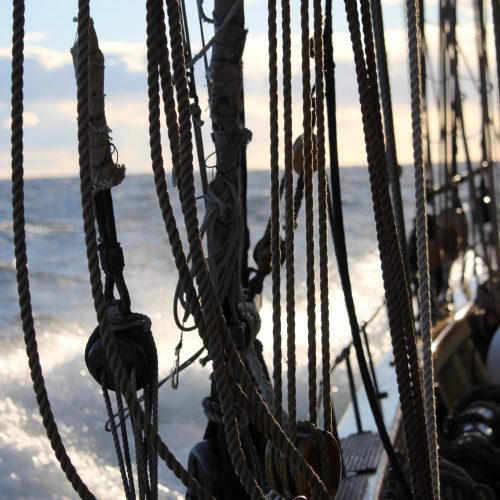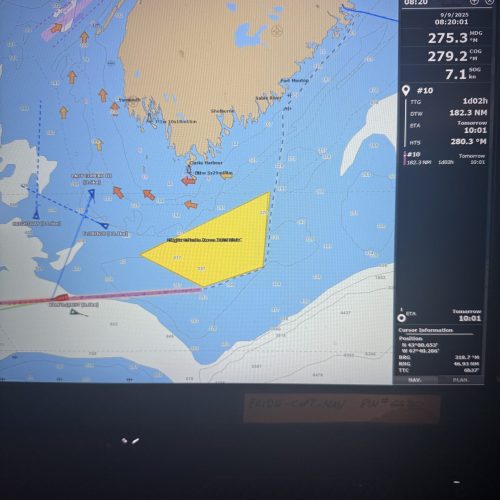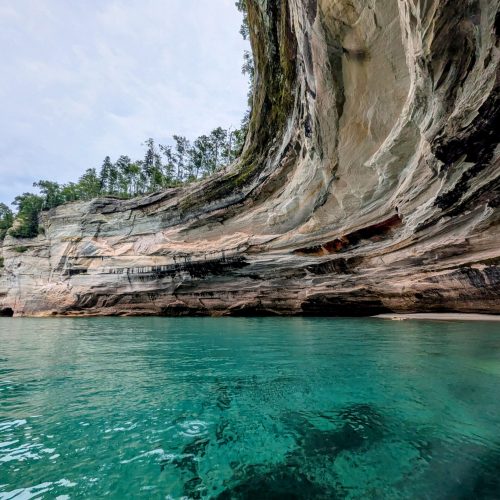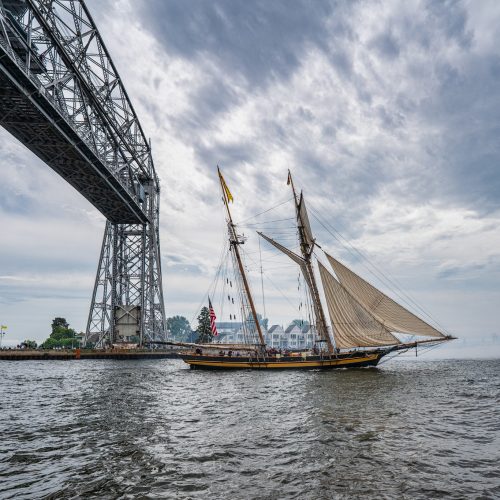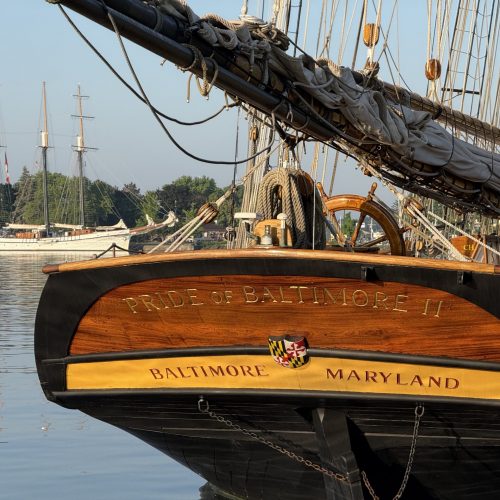The first four vessels of the fleet bigger classes (AA, A & B) that must finish by crossing the Thimble Shoal Light finish line down at the bottom of the Chesapeake Bay represent the last 100 year technological spread of design and material. Those finishers are Woodwind, Summerwind, Brilliant, and Light Reign.
Of the leading four schooners, the fully original old style classic schooner yacht is the 1932 Olin Stevens designed Brilliant. She flies only the style of sails of her day. The most arcane being the “golly wobbler”. The modernized and updated original classic schooner yacht is Summerwind, a 1929 Alden design. She sports the very latest in updated rig technology. Fully battened main and foresail with all carbon fibre spars carrying the modern single luff spinnaker-like downwind sails of todays modern racing machines. The other two schooners of these first four fleet finishers are modernly imagined classic schooner yachts. Woodwind and Light Reign are staysail schooners with aluminum spars and also make use of the modern downwind sails like the spinnaker or the single luff spinnaker-like sails of today’s most modern racers. Both of their hulls are quite light displacement types with less “wine glass” in profile by being more “hard bilged” and fin keel like as compared to the older two vessels. Their material is also different. Laminated wood or fiberglass, representing a much lighter construction with the advantage of being more “mono coke” constructed hence more stress bearing capable.
All four of these vessels jousted nearly abreast nearly all the way down the Chesapeake Bay. Leaving far behind most of the rest of the fleet. The order of finish appears to be Woodwind, Summerwind, Brilliant, then Light Reign. I am not certain there is any message to pick up with this finish order. Except to say collectively these more modern vessels of the fleet do not necessarily indicate much performance difference over the last 100 years of design and material knowledge exemplified between them…but do represent significant difference to sailing capability of the rest of the fleet.
The 5th vessel to cross the line was Adventurer. She is similar to Light Reign. She crossed behind the four leaders by between one and two hours.
Pride was the sixth vessel to cross the line some three to four hours after the leaders and one to two hours after Adventurer. Pride was the first of the classic “workboat” type vessels to cross the finish line. Being the near replica that she is of her 1812 era type, she is the heaviest of this year’s fleet. Also for this years 25th Annual Race Pride is the longest, the widest, the most complex antiquated rig style and possesses square-sails. It appears at this point (Saturday morning) no other member vessels of Pride‘s racing class behind her managed to finish the race at Thimble Shoal Light.
I think it is interesting that the technological differences between Pride and the leaders of this years race appear to represent a clear difference and advantage of the change in technology between 1812 and the last 100 years…but not so much change within the last 100 years. But when I consider the time difference between the less than 100 year old technology and Pride‘s represented era being only four to five hours in a 127 mile race between land on both sides of The Bay…not a lot of advantage in performance has been achieved by the change in technology Pride represents and the last 100 years. But I think that is to be expected with the physics associated with hulls that do not have the capacity to plane like the latest none traditional racers. Although, I must say it was a lot easier for the crew to race those more modern, smaller and speedier vessels than it was for the crew of Pride to manage her very old antiquated rig style and old style sails in the effort to sail the heaviest boat down the Chesapeake Bay after those “newer” and lighter leading schooners.
Hooray to the crew of Pride and my compliments to their successful efforts!
Jan C. Miles
A Captain with Pride of Baltimore, Inc.


